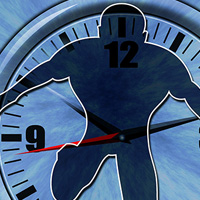Watching Your Step: Avoiding And Dealing With Falls Whilst Caring For The Elderly
Anyone that has even a tiny amount of experience in caring for the elderly will be able to alert you to the pitfalls and hazards of the job as primary caregiver. One of the first things that any of these individuals will mention to you that relate directly to your role is the constant danger of falls. The elderly, as a collective, have an astonishing number of falls every year. This can be attributed to a variety of factors but is primarily a result of feeling and being unstable on their feet. Their bodies are not agile enough to avoid falls and repeated episode could cause more harm than good. As elderly bones are more brittle that those of younger generations then they can easily be broken. Dislocated and fractured hips are the bone break of choice for most elderly individuals and can be extremely painful and debilitating. As a result, you need to be aware of the hazard and prevent it before it happens.
As prevention is better than cure when it comes to elderly falls and resultant hospital trips, it may be wise to put preventative measure in place to head off falls before they occur. Maintaining the safety and security of an elderly individual can be very difficult initially because you do not have eyes in the back of your head. It can take a while to become used to their movements, habits and routines. If you watch them closely enough over a period of time then you will soon be able to anticipate their moves before they make them. This can help to prevent falls because you will be able to spot danger a mile off. However, it is not a solution that can be used in the short term, and you do need to be able to prevent falls occurring as soon as possible after you become their primary caregiver.
The first thing that you should do to prevent trips and falls actually has nothing to do with the elderly individual in general terms. Instead, you should focus on their immediate environment. You should remove all possible tripping hazards in their home. Everything from rugs and loose carpeting to small objects that are used to decorate a room should be removed. They can all be hazardous in the right situation, or wrong situation as the case may be! You should also look into effective methods of controlling falls. Zimmer frames are extremely effective for those unsteady on their feet and cot sides can be attached to a bed to prevent falls during the night.
If the elderly individual that you look after does experience a fall in the home, then it is of the utmost importance that you know exactly how to deal with the situation. Firstly, you need to remove all hazards from around the individual to allow you to get closer and assess the damage. You must then administer first aid if it is appropriate to do so. Try not to move the individual until you are certain that there is no damage to joints and limbs. If there is or you think that he or she may have sustained a head injury, then you should immediately call an ambulance. Just keep your relative warm and as comfortable as possible until the paramedics arrive.
Falls represent very real hazards in the home and you must always be prepared to deal with them. You will inevitably have to deal with them at some stage, no matter how well prepared you are, but removing the means will reduce the amount of falls and hopefully lower the severity of the injuries.






